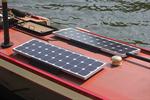 The idea of a sea change is appealing to many people, but the reality of uprooting your family, risking your financial security and leaving the convenience and familiarity of the city is not so appealing. However, there are changes that can be made to enhance and improve your lifestyle in the city.
The idea of a sea change is appealing to many people, but the reality of uprooting your family, risking your financial security and leaving the convenience and familiarity of the city is not so appealing. However, there are changes that can be made to enhance and improve your lifestyle in the city.
While you may not have room on the average suburban block to run a herd of cattle, goats or sheep, or to plant out a large kitchen garden you do have options. In some areas it may be possible to keep a few hens and a rooster to provide you with eggs, and possibly meat. Caring for your own animals means you can ensure they have adequate space (no more tiny cages) to roam free and good, healthy feed. You can then enjoy free range, organic food! This is an excellent idea if you have young children; teaching them how to care for their animals and understand where their food comes from.
Even if you only have a tiny patio or balcony in an apartment building a herb garden can be established. With the proliferation of lifestyle and gardening programs on TV at present you can find some interesting and often very attractive ways to incorporate a herb garden in the smallest of spaces. With a slightly larger yard you can plant out tomatoes, lettuce, carrots and other root vegetables. If you have a standard suburban block you have room for a citrus tree or two as well! Depending on your climate you can even plant berries to enjoy in summer.
Self sufficiency is not just about food. There are many things that we all rely on in society. Our clothing, our furnishings, our houses, our energy supply to name a few. Knitting is an increasingly popular past time and you should have no problem finding a knitting circle in most large cities. Learning to sew can enable you to make at least some of your own clothing, as well as bags, linens and other material items we use around the home. While it is not always practical alternate building methods do exist. One example is mud brick (or adobe) construction, an eco-friendly building option that has been in use for thousands of years in different parts of the world. Why not build your garden shed in mud brick and paint your home with additive free organic paint?
Buildings are often designed these days with precious little concern for the impact they have on our physical and emotional health (do you feel happier in a light, spacious room, or in a tiny, dark and drafty room) and the toxicity of many of the building materials we routinely use. The natural energy efficiency of a building can be markedly improved with common sense design and environmentally friendly energy sources such as solar power. Water efficiency and recycling is also a major area of concern in many areas experiencing drought.
The way in which we design our urban homes, the way in which we use the little land we have and the skills we can employ to make ourselves at least partially self-sufficient are all important. It is no longer ethical to ignore our ecological footprint just because we don't live in rural areas. Organic, free range food options are available and possible for most city dwellers. Environmentally friendly home design and energy resources are major areas where city dwellers can affect sensible and healthy changes.
While you may not be able to buy that shack on the beach-front, you can sit at your kitchen table and enjoy the views and smells of your herb garden and potted strawberry vines! If you want to learn more and get started improving your lifestyle, ACS has a range of short courses (as well as certificates and higher level qualifications) covering everything from self sufficiency to healthy buildings, organic plant production, fruit and vegetable production courses and nutrition subjects. www.acs.edu.au